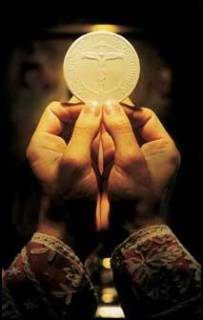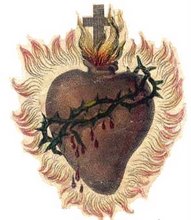Frankenstein's Monster: The 'New Church'
Paradoxically, there has been in recent history, a disturbing trend among those in Catholic higher education to do all that they can to attack the Church and her moral teachings, and to distance themselves from their true identity in order to embrace and receive accolades from those in the liberal secular movement. This situation objectively causes great scandal and harm to the faithful. The College of the Holy Cross in Worcester, Massachusetts provides the latest example.
Holy Cross is hosting a conference in which NARAL (National Association to Repeal Abortion Laws) and Planned Parenthood (the nations largest abortion provider and distributor of contraceptives) are the principle participants. The venue serves to promote and further their expressed goals, which run contrary to the truth about the dignity of the human person taught by the Church.
Why would a Catholic institution want to hurt what should be an integral part of its mission? The only reason I can deduce is that the institution, and those who run it, have abandoned the mission of the Church, and recreated the mission, and the Church, as they see fit. What they are left with is not the Church that Christ gave us, Christ guides, and Christ provides for our salvation. Instead they replace the Bride of Christ for the Bride of Frankenstein: a monster-church of their own making, comprised of various parts of secular ideologies and modern-liberal agendas, who contains no truth, no beauty, and no soul, and with a visage that can only be looked upon without horror only by those who created it. This monster-church, like Frankenstein's monster, mimics life as God gives it but reeks with the stench of death.
Truth be told, and to follow the Frankenstein analogy, even they come to hate this new creation, their monster-church with its false God. They come to see that their 'new church' is indeed not a new creation, but the work of the ancient Accuser and Father of Lies, who allows man to think that he has asserted his independence and superiority over God and His Church, all the while making him the most pathetic of slaves.
Bishop Robert McManus is the ordinary of Worcester and has bravely and strongly called Holy Cross to task. He calls them to their duty and dignity as a Catholic institution, and reminds them not to forget that he, as bishop, has "pastoral and canonical responsibility to determine what institutions can properly call themselves Catholic.”
This article from Catholic World News provides a good synopsis of the Bishop's statement.
Pray for Bishop McManus, and all Bishops, that they may have the courage of the Apostles whose successors they are, and proclaim the Truth of Jesus Christ in season and out, without counting the cost.
Questions and comments are welcome.
God love you!
************
Bishop Robert McManus of Worcester issued a statement on October 10, responding to protests from lay Catholics about plans for a conference at the College of the Holy Cross in which Planned Parenthood and NARAL Pro-Choice Massachusetts will make presentations. Siding with the pro-life protestors, Bishop McManus disclosed that he had urged Holy Cross to cancel the conference plans.
The organizations participating in the scheduled event, the bishop said, "promote positions on artificial contraception and abortion that are contrary to the moral teachings of the Catholic Church." Saying that the Church's position on key issues involving respect for life is "manifestly clear," he questioned why a Catholic school would offer these groups a forum. The bishop warned that the conference could create a "situation of offering scandal understood in its proper theological sense, i.e. an attitude or behavior which leads another to do evil." By canceling the conference, he said, Holy Cross would not infringe upon academic freedom, but would "make unambiguously clear the Catholic identity and mission of the College of the Holy Cross."
Bishop McManus noted that as the head of the Worcester diocese in which Holy Cross is located he has the "pastoral and canonical responsibility to determine what institutions can properly call themselves Catholic.” He added: "This is a duty that I do not take lightly…"
The bishop concluded his public statement by expressing his "fervent wish" that Holy Cross would cancel plans for the conference, "so that the college can continue to be recognized as a Catholic institution committed to promoting the moral teaching of the Roman Catholic Church."



